(AP Photo/Oliver de Ros)
(AP Photo/Oliver de Ros)
Yesterday U.S. Customs and Border Protection (CBP) released a lot of new data about migrants at the border through February. Here are updated versions of some graphics, using official data, that put those numbers in context.
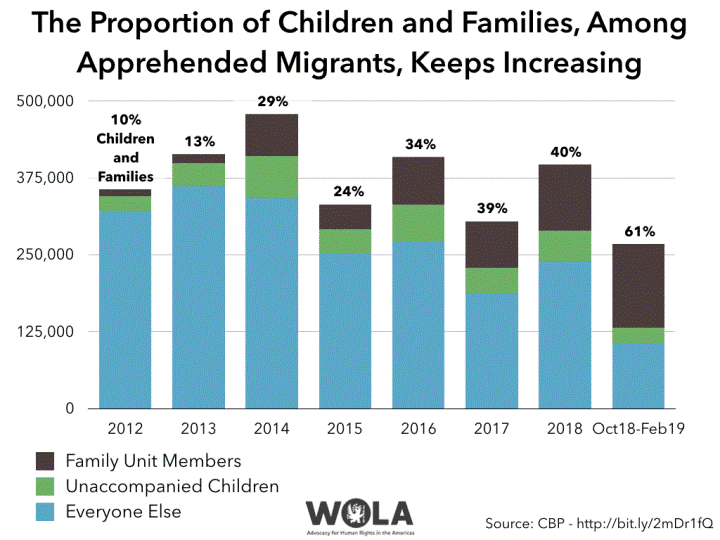
For the first time ever, an incredible 61 percent of all migrants apprehended by Border Patrol at the U.S.-Mexico border are children, and parents with children. This proportion was never as high as 10 percent before 2012.

Child and family apprehensions took a big leap in February, overwhelming Border Patrol’s capacity to deal with them—and U.S. humanitarian groups’ capacity as well.

The number of single adults being apprehended at the border remains near 50-year lows, and less than most of 2016. The typical migrant is no longer an adult traveling alone.

The same thing is happening in Mexico, which has seen asylum requests almost double every year since 2014. As in the United States, most of those requesting are citizens of El Salvador, Guatemala, and Honduras fleeing violence and poverty.
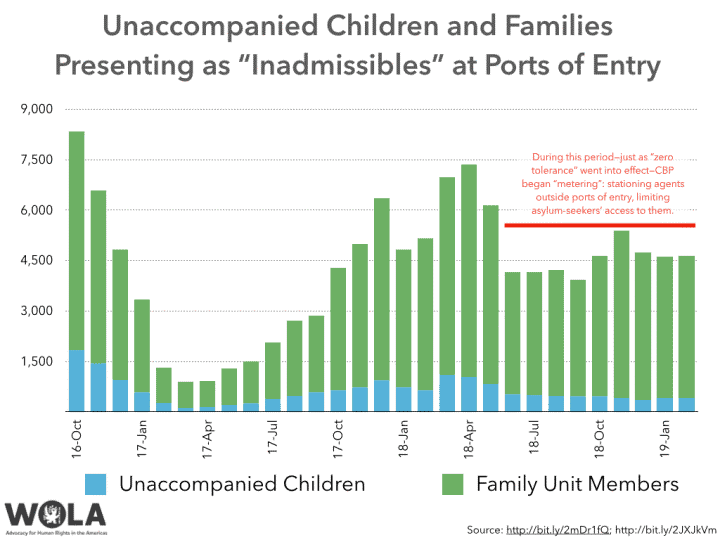
At official land ports of entry, there has been no increase in asylum-seekers. That is because CBP is rigidly “metering” arrivals of those who would seek asylum the “proper” way, posting officers at the borderline to prevent them from presenting themselves inside the ports.
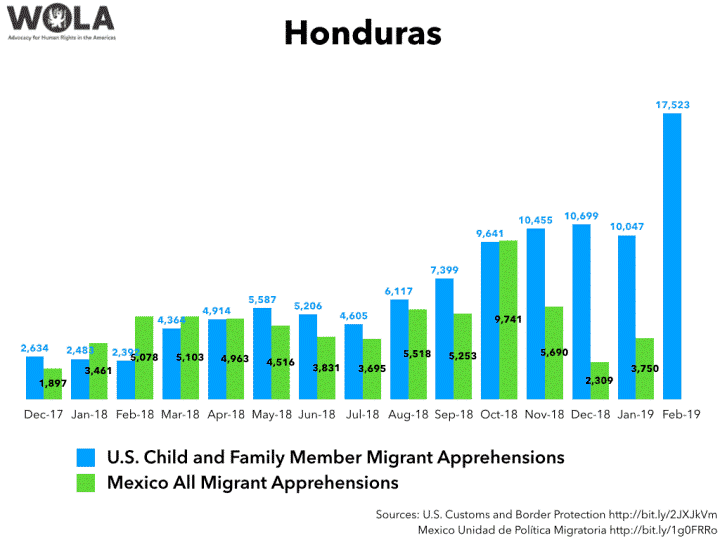
The largest percent increase in migration in February came from Honduras. Some were probably participants in a mid-January caravan, who received humanitarian visas from the Mexican government. As this was a one-time event—Mexico is not offering the visas in-country now—the number of Hondurans may drop in March.
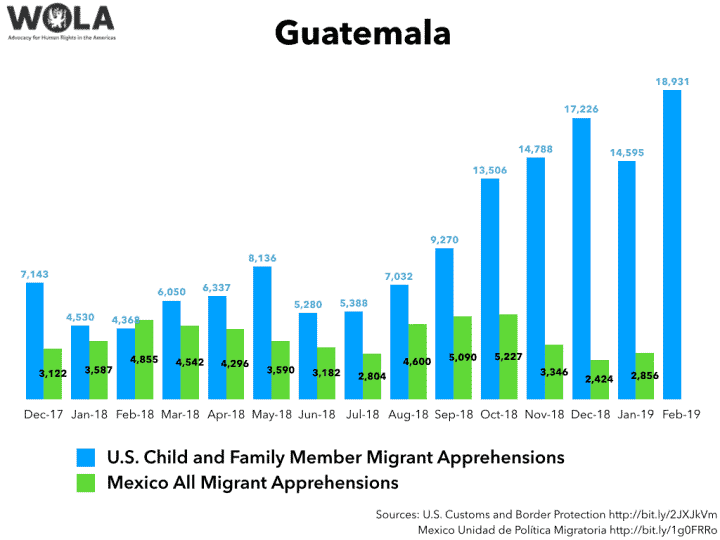
Guatemala is the number-one country for child and family arrivals. The flow is heaviest from the country’s rural highlands. A robust trafficking route is taking many to remote desert zones like Yuma and the New Mexico boot heel.

El Salvador has dropped to a distant third in child and family arrivals. The “northern triangle” is increasingly two-sided.

Arrivals from other countries are up, too. Many are probably fleeing Nicaragua’s brutal crackdown on dissent.
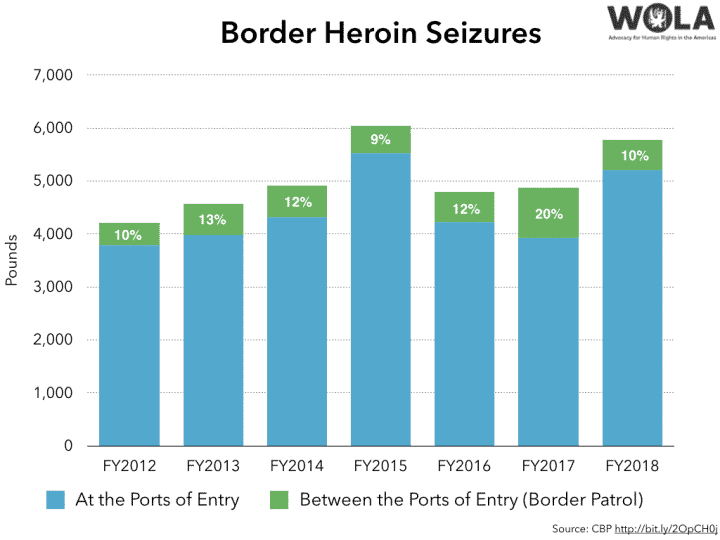
CBP data show that of heroin, cocaine, fentanyl, and methamphetamine seized at the border, the overwhelming majority—80 to 90 percent—is seized at ports of entry, not the spaces between the ports where walls would be built.
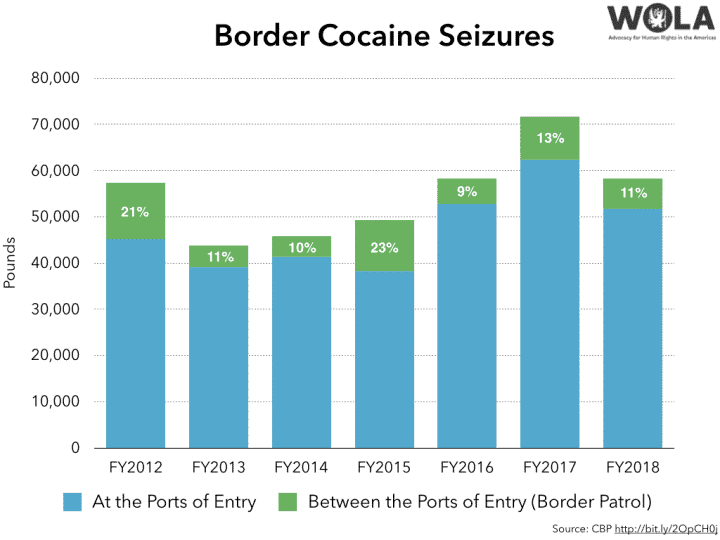
CBP data show that of heroin, cocaine, fentanyl, and methamphetamine seized at the border, the overwhelming majority—80 to 90 percent—is seized at ports of entry, not the spaces between the ports where walls would be built.
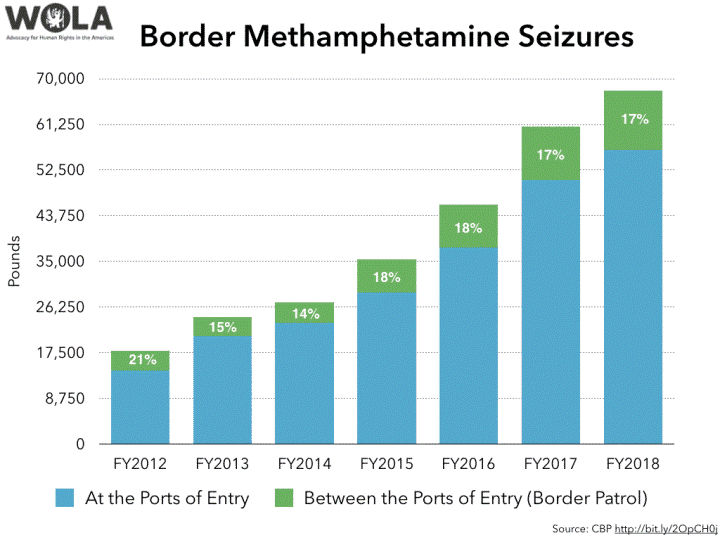
CBP data show that of heroin, cocaine, fentanyl, and methamphetamine seized at the border, the overwhelming majority—80 to 90 percent—is seized at ports of entry, not the spaces between the ports where walls would be built.
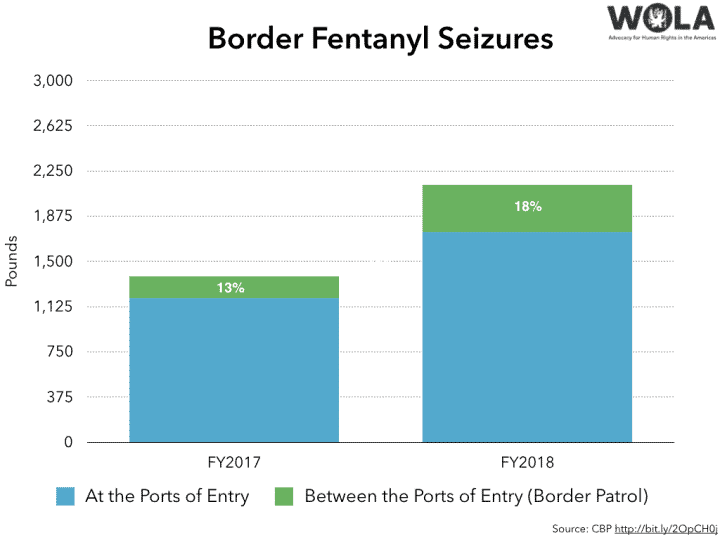
CBP data show that of heroin, cocaine, fentanyl, and methamphetamine seized at the border, the overwhelming majority—80 to 90 percent—is seized at ports of entry, not the spaces between the ports where walls would be built.
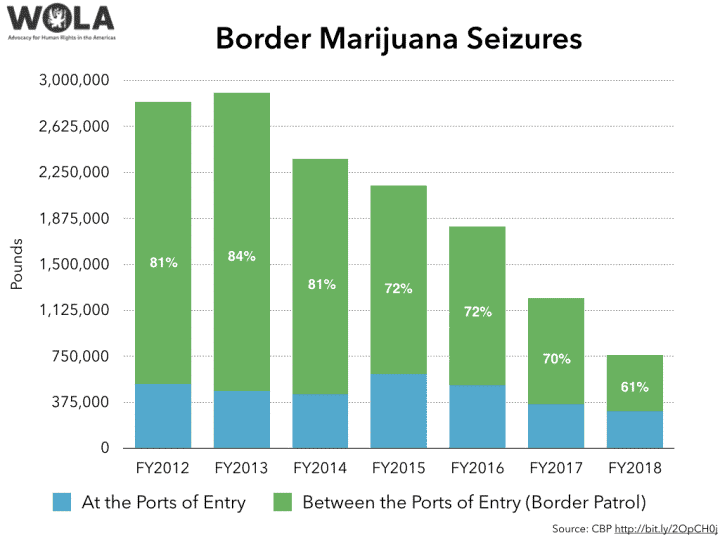
The one drug that is primarily seized between the ports of entry, where walls would be built, is marijuana. But marijuana trafficking from Mexico has dropped sharply since 2013. Several U.S. states’ legalization dealt a severe blow to Mexican cannabis traffickers.
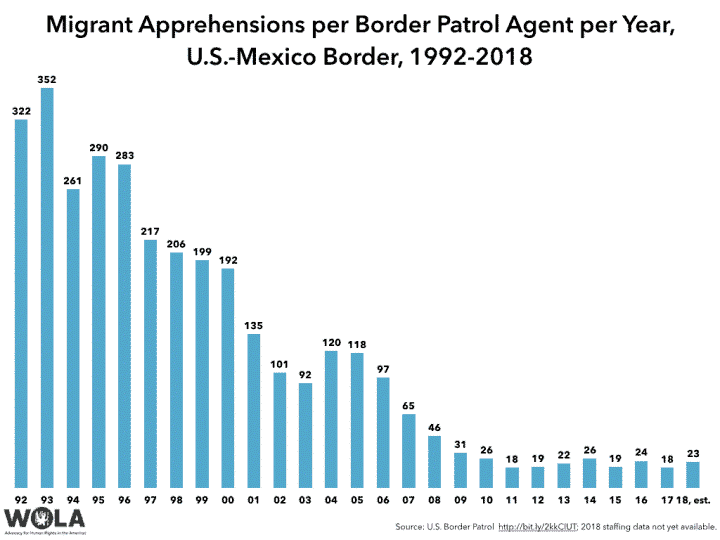
The average Border Patrol agent apprehended 23 migrants during all of fiscal 2018. And 9 of them (40 percent) were children and families who, in most cases, sought to be apprehended.

Though we still await data for 2018, in 2017 Border Patrol agents were apprehending far more migrants in Texas’s Rio Grande Valley sector than elsewhere.